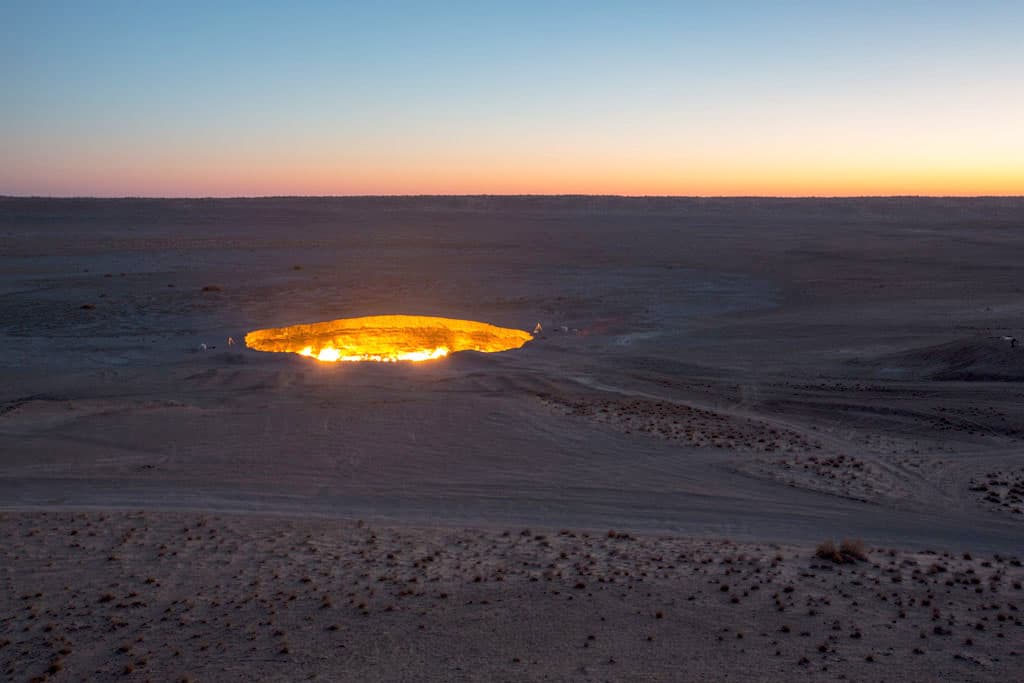
The Director of the Scientific Research Institute of the state concern "Turkmengaz" explained why the Darvaza crater has been burning for the sixth decade, and spoke about the method proposed by Turkmen scientists to control the gas discharge there.
Speaking at the forum "Environmental aspects of hydrocarbon production", Bayrammyrat Pirniyazov, head of the Natural Gas Research Institute, made a short excursion into the history of the Darvaza crater, located 270 kilometers from Ashgabat.
In 1963, an exploratory well was drilled on the Chaldzhulba structure of the Central Karakum group of deposits, but for the first time a cavity filled with gas was discovered at a shallow depth, into which the upper layers of the soil collapsed. There was formed a gap with a diameter of 60 m and a depth of about 20 m. Then the crater was set on fire to avoid poisoning people and animals with gas. It was assumed that the gas would burn out within a few days or the productive formation would be flooded, as in other structures, at a distance of 5-7 km, where there are two more craters - filled with Shikh water and Derweze clay.
However, this has not happened since then. Of course, measures were taken to study the state of the crater, they tried to find a collapsed exploration well. To do this, experts descended to the bottom of the crater. The idea was that if the cemented part of the wellbore was preserved, measures would be taken to mount coiled tubing fittings. Then the process of gas discharge will become controllable. However, the gas discharge occurs from different places within a radius of 20 meters, and it was not possible to detect the remains of the exploration well bore.
In addition, according to the results of the operation of production wells located in this zone, gas flows between the layers along the section are confirmed. A group of 16 gas fields has been discovered in the northern part of the Central Karakum, eight of them are currently being developed, and 39 wells are producing.
A feature of this group of deposits is the presence of a large number of thin low-capacity layers interbedded with aquifers and dense layers. It was revealed that the layers and deposits interact with each other. This explains the fact that a deposit of small reserves, discovered by an exploratory well, has been a source of crater burning for a long time.
In this regard, we proposed to drill an operational-appraisal well at the Chaldzhulba field. Due to the forced extraction of gas from the reservoir with the largest reserves, it is planned to turn the gas filtration flow and reduce its uncontrolled flow into the crater. After reducing the intensity of gas inflow into the crater, it will be possible to isolate the surface of the crater.
Due to such a solution, uncontrolled gas emissions into the atmosphere will be completely eliminated.
ORIENT news
